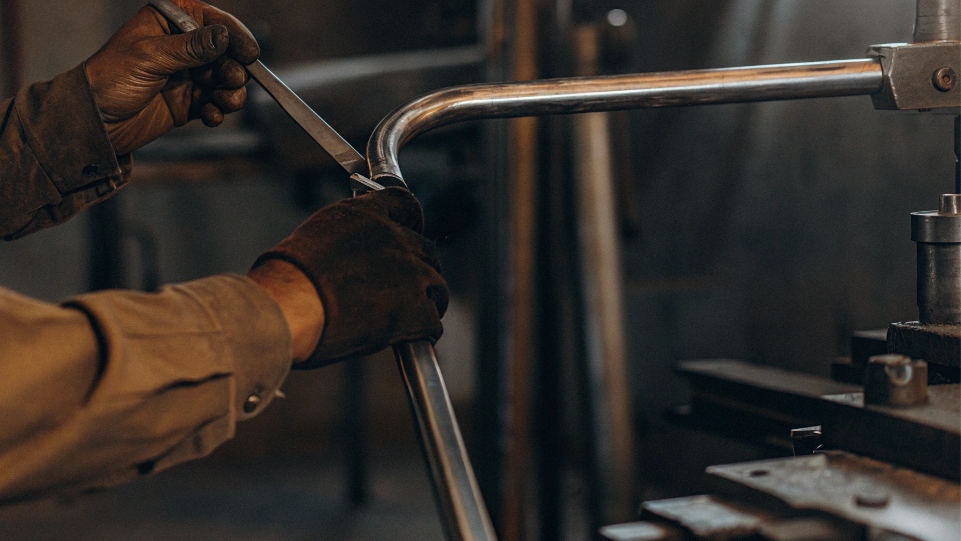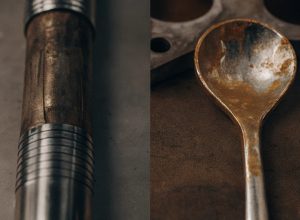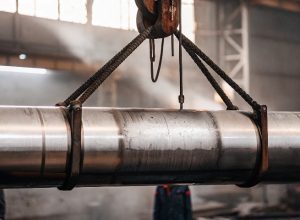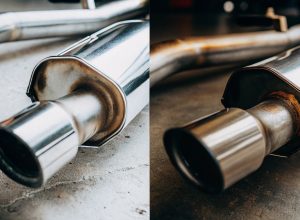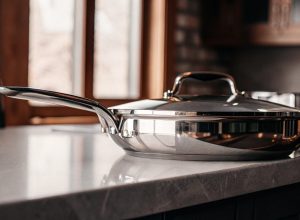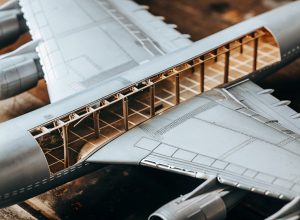¿Le preocupa que su equipo se abolla con facilidad? Los metales comunes fallan con los impactos, provocando costosas reparaciones. Pero la gran resistencia del titanio ofrece una solución duradera para su proyecto.
Abollar titanio requiere una fuerza significativa y concentrada, mucho mayor que la necesaria para el acero o el aluminio. Para la mayoría de usos industriales, un impacto casual no dejará marca. La fuerza exacta depende en gran medida de la aleación, su grosor y el tipo de impacto que reciba.
A menudo hablo con jefes de producto como Lisa, que necesitan estar seguros de los materiales que eligen para sus equipos químicos. Necesita saber que el titanio que especifica no fallará ni tendrá mal aspecto tras un pequeño accidente en la fábrica. La buena noticia es que la reputación de resistencia del titanio es bien merecida. Resiste excepcionalmente bien. Pero hay más cosas que entender sobre su comportamiento ante distintos tipos de fuerza. Veamos algunas preguntas frecuentes sobre su durabilidad.
¿Cuánta fuerza se necesita para doblar el titanio?
¿Necesita moldear piezas de titanio para su diseño? Utilizar la fuerza o la técnica equivocadas puede arruinar un material caro y retrasar su proyecto. Conocer el enfoque correcto ahorra tiempo y dinero.
Doblar titanio requiere maquinaria especializada y una presión muy alta, a menudo de cientos de megapascales (MPa). La fuerza exacta depende del grado de titanio, el grosor del material y el radio de curvatura. No es algo que se pueda conseguir con las herramientas habituales de un taller.
En mi trabajo en nuestra planta de Baoji, manipulamos curvado de titanio todos los días. La fuerza necesaria varía mucho entre los distintos tipos de titanio. Para una jefa de producto como Lisa, es importante entender esta diferencia. Doblar una lámina fina de titanio comercialmente puro (CP) es mucho más fácil que doblar una placa gruesa de una aleación aeroespacial.
Por ejemplo, nuestro titanio de calidad aeroespacial, Ti-6Al-4V ELI, está diseñado para resistir la flexión. Tiene una resistencia increíble. Para doblarlo, se necesita una fuerza inmensa y a menudo hay que calentar el metal para hacerlo más flexible. Este proceso se denomina conformado en caliente1. Por otra parte, algunas calidades CP más blandas pueden curvarse a temperatura ambiente, lo que denominamos conformado en frío2pero siguen necesitando mucha más fuerza que el acero.
A continuación se presenta una tabla sencilla para mostrar la diferencia de resistencia, que afecta a la flexión.
| Grado de titanio | Límite elástico (aprox. MPa) | Notas de flexión |
|---|---|---|
| CP Grado 2 | 275 MPa | Puede moldearse en frío, pero requiere mucha fuerza. |
| Ti-6Al-4V (Grado 5) | 830 MPa | Muy difícil de doblar en frío; requiere calor. |
| Ti-6Al-4V ELI (Grado 23) | 760 MPa | Similar al Grado 5; exige aptitudes especiales. |
Esto demuestra que no se puede tratar todo el titanio de la misma manera. La elección de la aleación influye directamente en cómo debe fabricarse.
¿Es fácil abollar el titanio?
¿Le dan miedo los daños superficiales en su maquinaria? Las abolladuras y arañazos pueden comprometer el rendimiento, crear lugares donde se inicie la corrosión y dar un aspecto poco profesional a una maquinaria cara.
No, el titanio no se abolla fácilmente. Su combinación de gran dureza y resistencia le permite resistir fácilmente impactos que abollarían metales más blandos como el aluminio o incluso muchos tipos de acero. En la mayoría de las aplicaciones industriales, las abolladuras no son un problema durante el uso normal.
Los clientes de los sectores naval y automovilístico nos cuentan a menudo lo impresionados que están con nuestro material. Nos informan de que nuestras láminas de titanio de gran pureza mantienen una integridad superficial perfecta incluso tras impactos moderados. Esto hace que las abolladuras sean muy improbables durante el funcionamiento normal. Esta fiabilidad es clave para alguien como Lisa, que necesita prometer a sus clientes un producto duradero y de bajo mantenimiento.
La resistencia a las abolladuras se reduce a dos propiedades: dureza y límite elástico3. La dureza es la capacidad del material para resistir arañazos superficiales e indentaciones. El límite elástico es la fuerza necesaria para deformar permanentemente el material. El titanio obtiene muy buenas puntuaciones en ambas áreas.
He aquí una rápida comparación para ponerlo en perspectiva.
| Material | Resistencia a las abolladuras | Observación común |
|---|---|---|
| Aluminio | Bajo | Se abolla muy fácilmente por pequeños impactos. |
| Acero al carbono | Medio | Puede abollarse con fuerza moderada. |
| Titanio | Alta | Resiste las abolladuras de la mayoría de los impactos accidentales. |
Por lo tanto, al elegir titanio, está eligiendo un material que mantendrá su forma y su superficie lisa durante mucho tiempo, incluso en un duro entorno industrial.
¿Es difícil doblar el titanio?
¿Le resulta difícil trabajar con titanio en su taller? Su asombrosa resistencia puede convertir la fabricación en un verdadero reto, causando frustración y desperdicio de material a los equipos sin experiencia.
Doblar titanio es muy duro, principalmente debido a su alta resistencia y a una "springback4"efecto. Requiere maquinaria potente, como prensas plegadoras, y a menudo hay que calentar el material para que sea más trabajable. Es una tarea especializada, no apta para un taller estándar.
Con más de 15 años de experiencia en fabricación, puedo decirle que curvar titanio es tanto un arte como una ciencia. El mayor reto al que nos enfrentamos es la recuperación elástica. Cuando se dobla una pieza de metal, es natural que quiera volver un poco a su forma original. El titanio tiene un springback mucho más fuerte que el acero.
Esto significa que si desea una curva de 90 grados, es posible que tenga que doblar el titanio5 a 95 o 100 grados para conseguir que se asiente en el ángulo correcto. Esto requiere mucho ensayo y error si no se cuenta con la experiencia y los datos adecuados. Para una jefa de producto como Lisa, especificar un diseño con tolerancias de curvatura estrechas significa que debe trabajar con un fabricante que realmente entienda esta propiedad.
Principales retos del curvado del titanio
- Alta Fuerza: Como ya hemos comentado, se necesita un equipo muy potente.
- Springback: El material se resiste a la nueva forma, lo que dificulta la precisión.
- Galling: El titanio puede adherirse a las superficies de las herramientas durante el plegado, lo que daña tanto la herramienta como la pieza. Se necesitan lubricantes y materiales de herramienta especiales.
- Endurecimiento del trabajo: Doblar titanio a temperatura ambiente endurece la zona doblada y la hace menos dúctil, lo que puede provocar grietas si se intenta doblar de nuevo.
Se necesitan conocimientos especializados para superar con éxito estos problemas.
¿Se agrieta el titanio bajo presión?
¿Está llevando sus materiales a sus límites absolutos? Las grietas repentinas en un componente pueden provocar fallos catastróficos en los equipos, con los consiguientes riesgos para la seguridad y costosos tiempos de inactividad. Necesita un material fiable.
El titanio es extremadamente resistente y dúctil, lo que significa que casi siempre se doblará o deformará mucho antes de agrietarse. Sin embargo, si se somete a una presión extrema que supere su resistencia a la tracción o a ciclos de tensión repetidos (fatiga), puede llegar a agrietarse. Para evitarlo, es fundamental seleccionar la calidad adecuada.
Una de las mejores características del titanio es su dureza. La fuerza es la capacidad de resistir la flexión, pero la dureza es la capacidad de resistir la rotura. El titanio es excelente en ambas. No le gusta fallar de repente. Por eso se utiliza en las aplicaciones más críticas, como los trenes de aterrizaje de aviones y los implantes médicos.
Para los equipos químicos de Lisa, esto supone una enorme ventaja de seguridad. Un recipiente de titanio sometido a alta presión tiene muchas más probabilidades de abombarse o deformarse ligeramente si se le empuja más allá de sus límites, dando a los operarios una señal de advertencia. No se fracturará sin previo aviso, como podría ocurrir con un material más frágil.
La calidad del titanio es muy importante. Para las piezas aeroespaciales, solemos utilizar Ti-6Al-4V ELI. ELI" significa "Extra Low Interstitials". Esto significa que controlamos estrictamente elementos como el oxígeno y el hierro en la aleación. Este refinamiento aumenta drásticamente la tenacidad a la fractura del material y lo hace aún más resistente al agrietamiento, especialmente a temperaturas muy frías. Elegir el grado adecuado garantiza que el material tenga la tenacidad necesaria para su trabajo específico.
Conclusión
El titanio es excepcionalmente fuerte y resistente. Resiste abolladuras y grietas en condiciones normales de uso industrial, pero requiere equipos especializados y conocimientos para doblarse correctamente debido a su gran resistencia.
-
Descubra el proceso de conformado en caliente y su importancia a la hora de dar forma al titanio para diversas aplicaciones. ↩
-
Comprender las diferencias entre las técnicas de conformado en frío y en caliente del titanio y sus aplicaciones. ↩
-
Comprender el límite elástico y su importancia para determinar el comportamiento del titanio bajo tensión. ↩
-
Conozca el springback y sus implicaciones para doblar titanio con precisión en la fabricación. ↩
-
Descubra las ventajas del titanio, como su resistencia y durabilidad, que lo hacen ideal para diversos usos industriales. ↩




